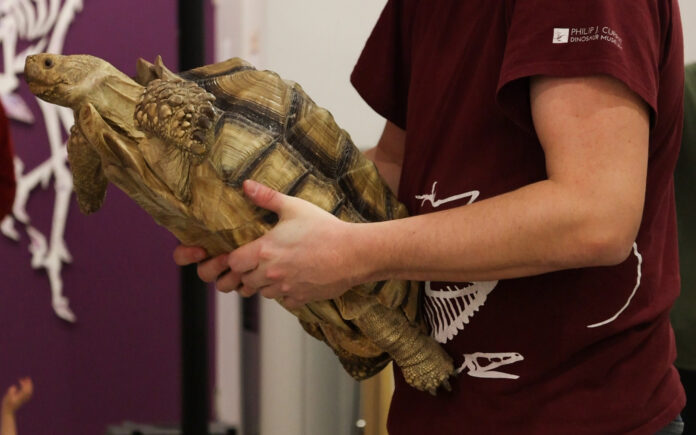After celebrating Mack the Tortoise’s first anniversary at Wembley’s Philip J. Currie Dinosaur Museum, museum officials took the opportunity to speak on the benefits of having a living specimen at a natural history museum.
Ashley Kerr, Communications Coordinator for Philip J. Currie, says there are two living specimens at the museum- Mack the tortoise, and Peanut the corn snake. She says having the two reptiles not only serves as a significant draw for visitors but also as an important educational tool for kids.
“A museum is a great place to go especially our museum, dinosaurs are really cool and we have a lot of amazing displays in our gallery, but of course, these are stagnant displays,” she says. “You have to read and learn about them, and they’re fascinating, but as a kid, you might be looking for something really engaging, so it’s awesome to have these wild, real, alive specimens.”
Kerr says the two scaly friends manage to teach museum goers important lessons about the animals that walk on earth today and serve as a reminder of the planet’s history, as real-life examples of what some creatures became after the extinction of dinosaurs.
“They teach you a lot about the wildlife you might see in your everyday life, you’re not going to come across a dinosaur, but you could come across a turtle, or a snake,” she says. “The more you know about these animals, the more you respect them, so I think it’s a really good draw and educational piece that is even more engaging than the stuff we already have in our gallery, definitely for kids.”
According to Kerr, Mack and Peanut are quite social creatures who enjoy meeting new people and are available to visit during museum hours from 10:00 a.m. to 5:00 p.m. Thursday to Sunday.



